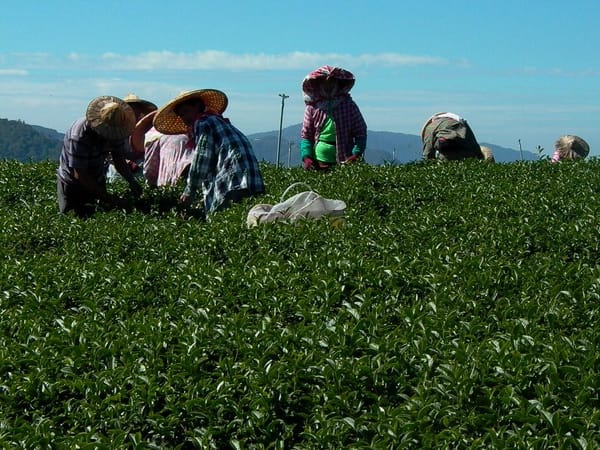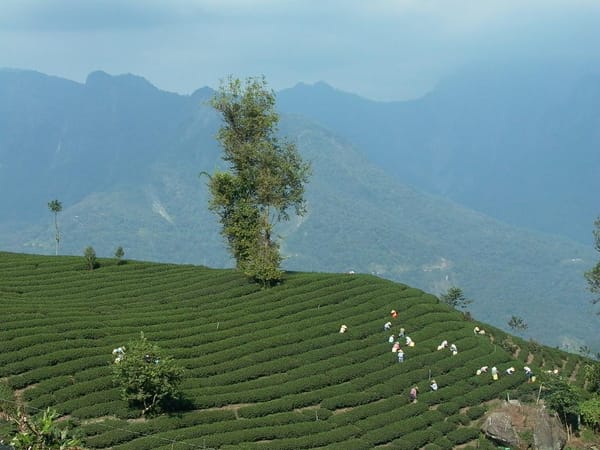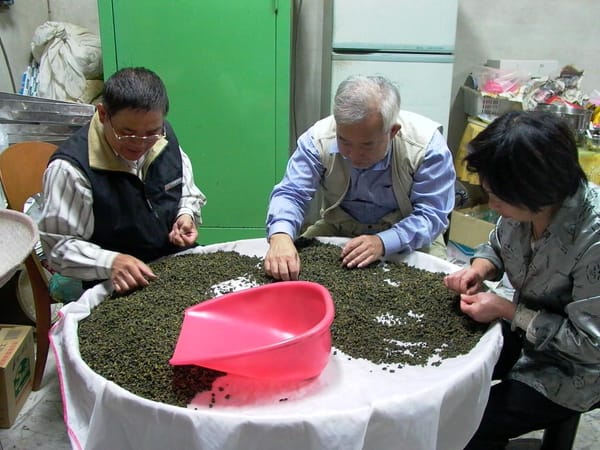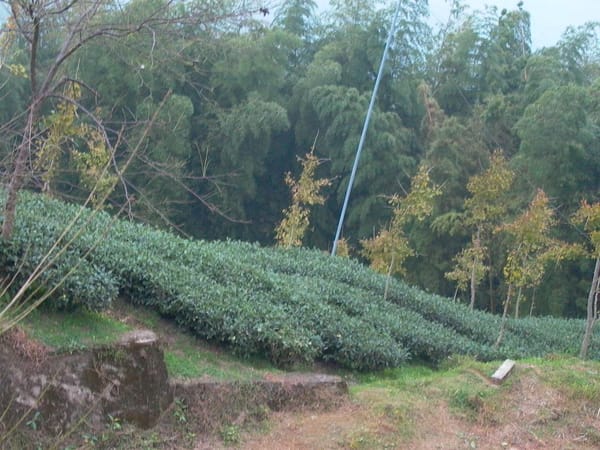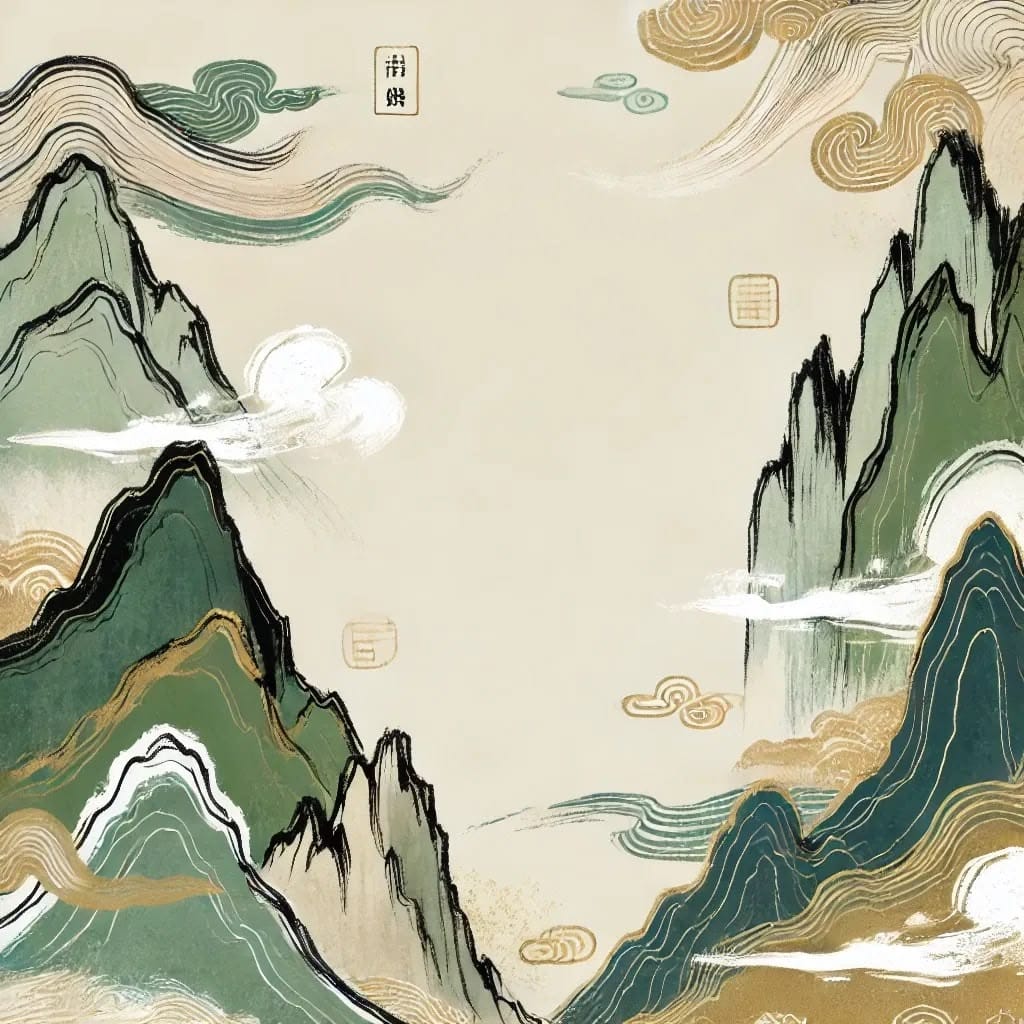Standing at 2,200 meters above sea level in the misty tea fields of Fushoushan Farm in Lishan, one feels as though they've stepped into a paradise above the clouds. It’s hard to imagine that Taiwan’s renowned oolong tea once grew only in the low hills between 600 to 800 meters. This “vertical migration” of tea cultivation—from foothills to lofty mountains—not only redrew Taiwan’s tea map but also gave birth to the global legend of “High Mountain Oolong Tea.”
This is a story of pursuing excellence and of tea farmers dancing with nature. Once Dong Ding Oolong was synonymous with Taiwan tea. How, then, did high mountain tea rise to claim that spotlight and become Taiwan's own tea pride?
Let us retrace the path from hillside farms to cloud-kissed plantations, exploring how elevation shaped the golden era of Taiwan's tea industry.
Historic Traces of Taiwan's Early Tea Regions
Over the past two centuries, Taiwan’s oolong tea gradually migrated south along the northern tea belt, climbing steadily from lower to higher altitudes. This shift reflects not only the trajectory of Taiwan’s tea development but also changing consumer tastes.
Taiwan's earliest oolong-growing areas began in northern Guanyinshan, extending through Shimen, Sanzhi, Tamsui, Linkou, Guishan, Pingding, Longtan, Tongluo Circle, Sanchiaoshui Plateau, Jinshan Plateau in Hsinchu, and Miaoli's Toufen and Sanyi. These tea regions, established during the Japanese colonial period, once defined the benchmarks for Taiwanese oolong.
In the 1940s and 1950s, tea expert Lin Fu-Chuan noted in Oolong and Pouchong Tea Manufacturing Science that regions such as Wenshan, Xizhi, Haishan, Jiaoban, Zhudong, Beipu, Emei, and Laotianliao produced top-quality oolong. At that time, Laotianliao’s tea from Miaoli rivaled the fame of Wenshan Pouchong and Dong Ding Oolong—highlighting the significance of mid-altitude regions.
However, over time, these older plantations began to suffer from soil acidification. As soil fertility declined and tea trees aged, the resulting tea quality diminished, creating an opening for the rise of high mountain regions.
1970s: A Southward Shift in Production Regions
In the 1970s, Taiwan’s tea production shifted toward the central and southern regions, marking a significant transformation in the tea map. New production zones expanded into Nantou (Ren’ai, Shuili, Yuchi, Xinyi, Lugu, Zhushan, Mingjian), Yunlin (Gukeng, Caoling, Huashan), and Chiayi (Zhuqi, Meishan, Alishan, Fanlujiao).
During this era, Nantou's Lugu Township became famous for Dong Ding Oolong Tea. A touching legend surrounds its origins: In the 1990s, a 150-year-old tea tree was discovered on Dong Ding Mountain. Lin You-Tian claimed it was a Ruan Zhi Oolong variety brought back from Wuyi by Qing Dynasty scholar Lin Feng-Chi to repay a favor from his ancestor, Lin San-Xian, who had lent him money for his exam journey.
Although the age and origin of this tree remain unconfirmed, Dong Ding Oolong surged in popularity across Taiwan, becoming a symbol of Taiwan tea and showcasing the charm of mid-altitude cultivation.
1980s: The High-Altitude Era Begins
In the 1980s, Taiwan’s tea industry reached a pivotal turning point—it officially entered the high-altitude era. Tea regions above 1,000 meters became known as “High Mountain Oolong Tea Areas,” with notable plantations in Taichung’s Heping District, Lishan, and the Huatung Rift Valley in eastern Taiwan.
The term “High Mountain Oolong Tea” has a charming origin story. In 1970, fruit farmer Chen Jin-Di managed orchards in Lishan to supply pears to President Chiang Kai-Shek. He later introduced oolong seedlings from Dong Ding and began tea cultivation. Since he didn’t know what to name the tea, he simply called it “High Mountain Oolong” based on its altitude.
Since then, “High Mountain Oolong Tea” has been clearly defined as oolong grown at elevations above 1,000 meters. This not only established a quality benchmark but also opened a new development path for Taiwanese tea.
Distribution of Major Mountain Systems
Taiwan’s high mountain oolong tea regions form a well-defined network, with each mountain range offering distinct altitudinal advantages and terroir.
- Lishan Range is the crown jewel. Fushoushan Farm sits at 2,200m—the highest tea farm in Taiwan. Huagang Farm is at 2,000m, Wuling at 1,700m, and Dayuling reaches 2,100m. These ultra-high-altitude gardens produce exceptional and highly valued teas.
- Greater Alishan Range includes Shizhuo (1,200m), Zhangshuhu (1,300m), Taihe (1,100m), and Ruili (1,100m), forming a robust high mountain tea industry.
- Yushan Range features Tatajia (1,600m), Lushan Range includes Qingjing Farm (1,600m), and Meishan Range encompasses Taiping (1,000m) and Longyanlin (1,200m).
In contrast, traditional Dong Ding Range covers lower altitudes: Lugu (600m), Zhushan (250m), Songbaikeng (500m), highlighting the altitudinal advantage of newer high mountain regions.
Quality Advantages of High Altitude
Newly developed high mountain tea gardens in Taiwan enjoy unmatched natural advantages. The soil is rich in organic matter and nutrients, promoting healthy tea growth.
More importantly, the cool climate slows tea growth, allowing ample time for amino acids and aromatic compounds to accumulate. The mist-shrouded environment provides natural shading, reducing sun stress and keeping tea leaves tender.
Large day-night temperature differences further enhance internal compounds, especially sugars and amino acids—key to the sweet, lingering finish of high mountain oolong.
Changing Market Dynamics
High mountain tea’s superior quality quickly gained market favor. With its altitude advantage, it overtook mid-altitude teas and dethroned Dong Ding Oolong as Taiwan’s flagship variety.
This market shift reflects rising consumer expectations. High Mountain Oolong has become a premium export product and a world-recognized symbol of Taiwan tea.
The rise of high mountain tea also spurred related industries—from plantation management and processing to branding and packaging—fostering a complete tea ecosystem.
Innovation and Technical Excellence
The development of high mountain tea went hand-in-hand with technical innovation. Tea masters refined withering, oxidation, and roasting techniques to suit the unique high-altitude environment.
Tea cultivar selection also advanced. Taiwan’s Tea Research and Extension Station developed various “Taiwan Tea” varieties tailored to mountain growing conditions, ensuring both quality and plant resilience.
Toward Sustainable Development
With rapid growth comes responsibility. Ensuring environmental sustainability while pursuing economic gain is a pressing challenge.
Many farmers are turning to organic farming, reducing chemical fertilizers and pesticides. This protects mountain ecosystems while improving safety and quality—charting a sustainable future for Taiwan’s high mountain tea.
Looking Ahead
From 600m to 2200m, Taiwan’s high mountain oolong tea story is not just a quality revolution—it’s a shining testament to innovation and dedication. This journey from foothills to cloud gardens reflects the passion of tea farmers and the vitality of Taiwan’s ever-evolving tea culture.
Each sip of high mountain oolong carries the purity of elevation, and each aroma whispers of misty peaks and poetic landscapes. The success of Taiwan High Mountain Tea is not only economic—it’s a gift to world tea culture and one of Taiwan’s most beautiful symbols.

